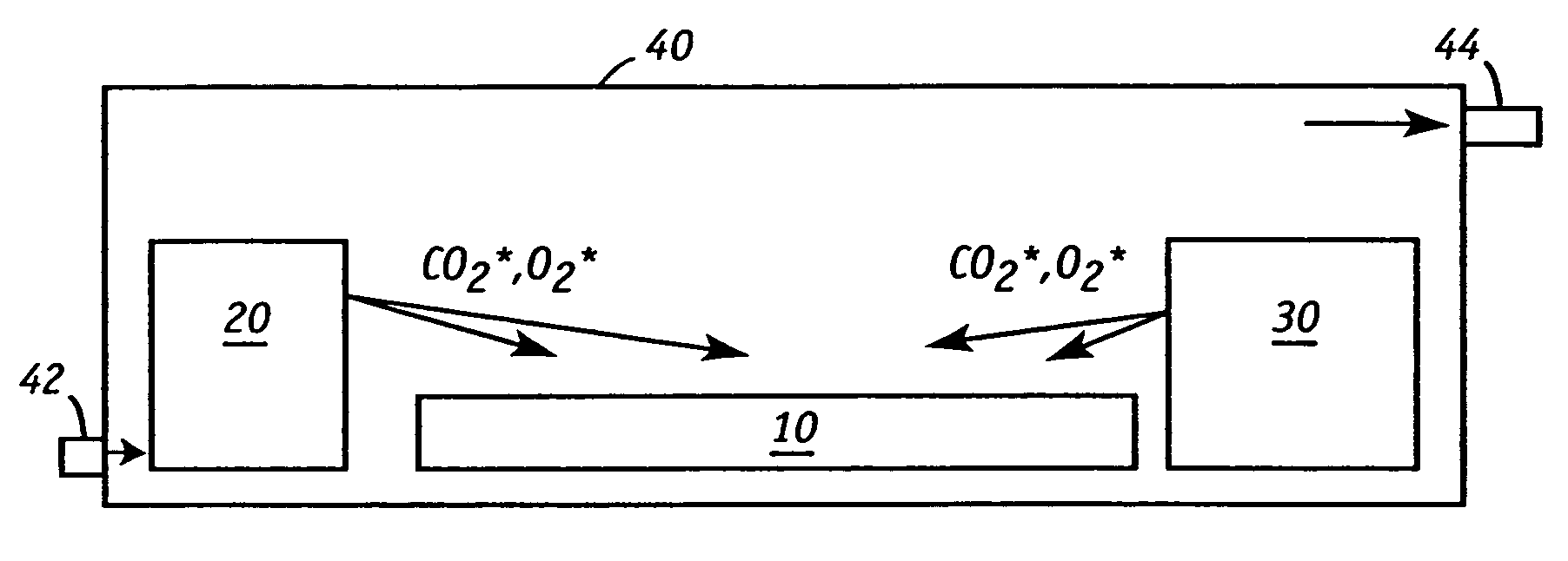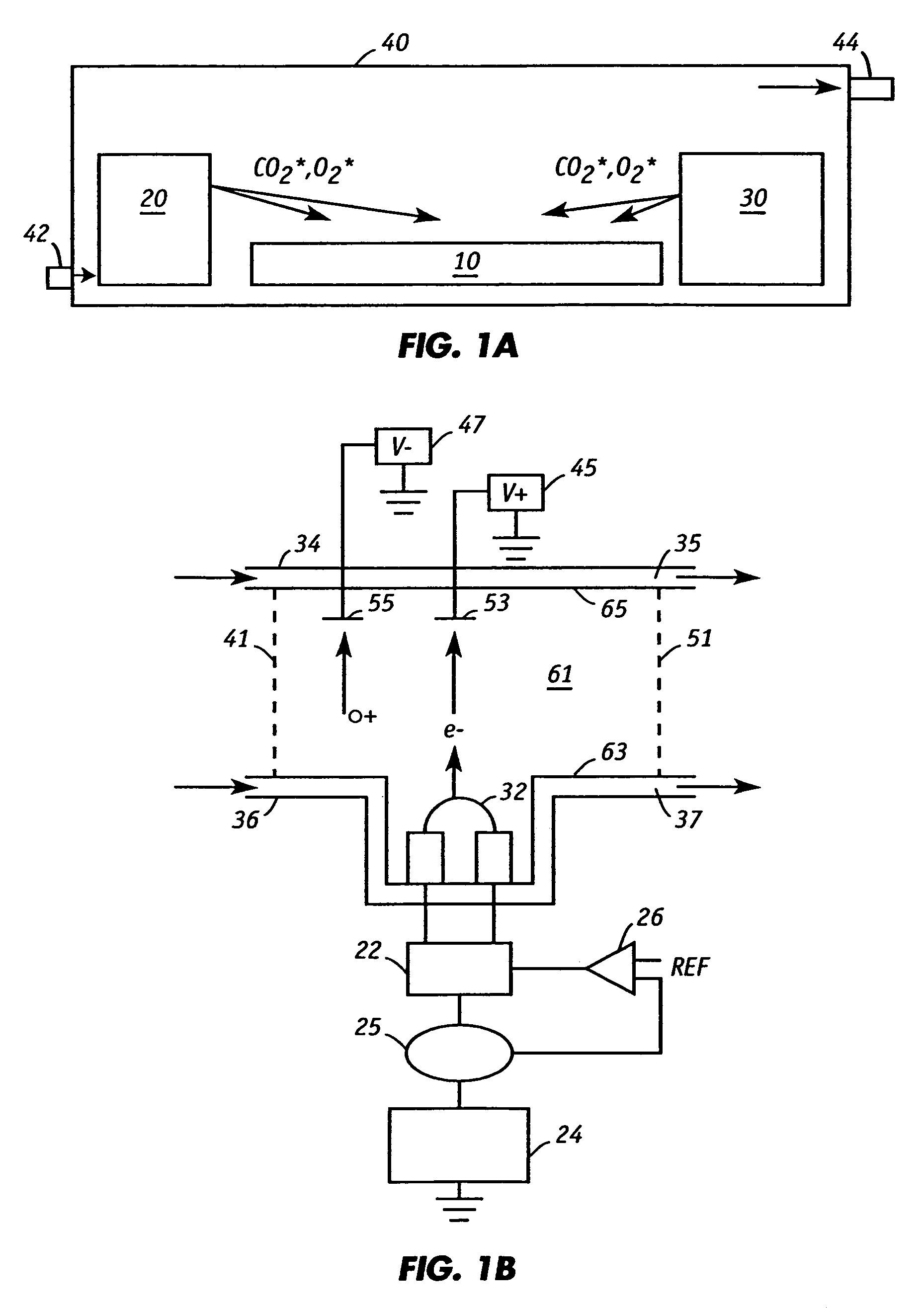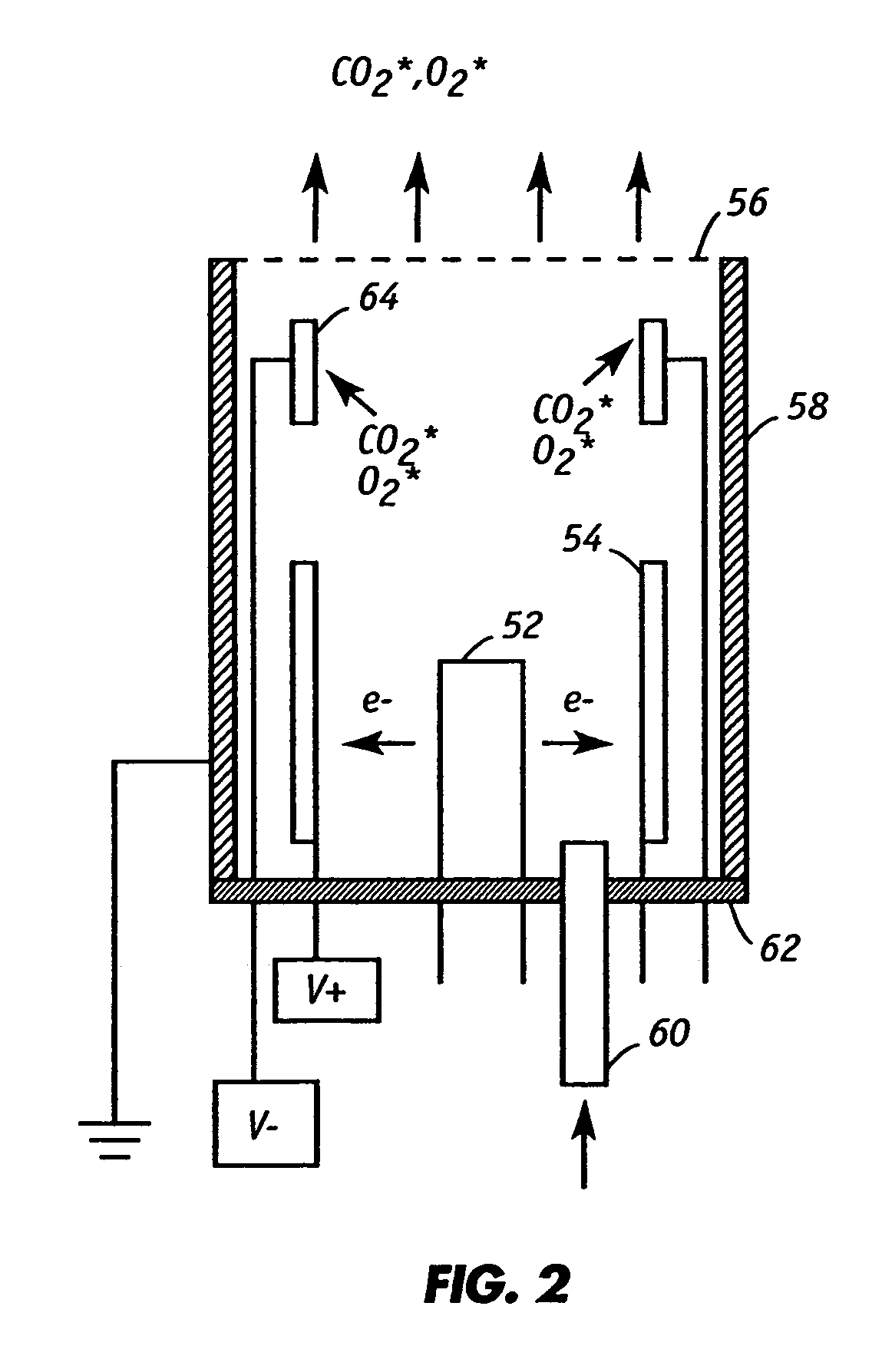Method for in-situ cleaning of carbon contaminated surfaces
a technology for cleaning apparatus and carbon contaminated surfaces, applied in the direction of photomechanical apparatus, cleaning using liquids, instruments, etc., can solve the problems of reduced efficiency, carbon contamination of multi-layer optics and masks, and inability to completely remove carbon
- Summary
- Abstract
- Description
- Claims
- Application Information
AI Technical Summary
Problems solved by technology
Method used
Image
Examples
Embodiment Construction
[0019]It is known that low energy electrons (about 0–50 eV) can activate gas phase molecules to make them more reactive than their ground (or unexcited) state. For example, oxygen and carbon dioxide can be electron activated at pressures of about 50–400 mTorr to form reactive gas-phase species (O2* and CO2*) which can be employed to gasify carbon in reactions that are represented as follows:
C+O2*=CO2(g) (1)
C+CO2*=2CO(g) (2)
[0020]The present invention generates electron-activated gas phase species such as O2*, CO2* strategically inside the lithographic environment near the optics to remove carbon contaminants.
[0021]FIG. 1A illustrates one embodiment of the invention for in-situ cleaning of a carbon contaminated optic 10 (e.g., mirror that reflects extreme ultraviolet radiation) that is situated within a vacuum chamber defined by housing 40 of a photolithography machine. Located on opposite sides of the mirror are gas activation devices 20 and 30 that generate electron-activated gas...
PUM
| Property | Measurement | Unit |
|---|---|---|
| pressure | aaaaa | aaaaa |
| energy | aaaaa | aaaaa |
| wavelength range | aaaaa | aaaaa |
Abstract
Description
Claims
Application Information
 Login to View More
Login to View More - R&D
- Intellectual Property
- Life Sciences
- Materials
- Tech Scout
- Unparalleled Data Quality
- Higher Quality Content
- 60% Fewer Hallucinations
Browse by: Latest US Patents, China's latest patents, Technical Efficacy Thesaurus, Application Domain, Technology Topic, Popular Technical Reports.
© 2025 PatSnap. All rights reserved.Legal|Privacy policy|Modern Slavery Act Transparency Statement|Sitemap|About US| Contact US: help@patsnap.com



